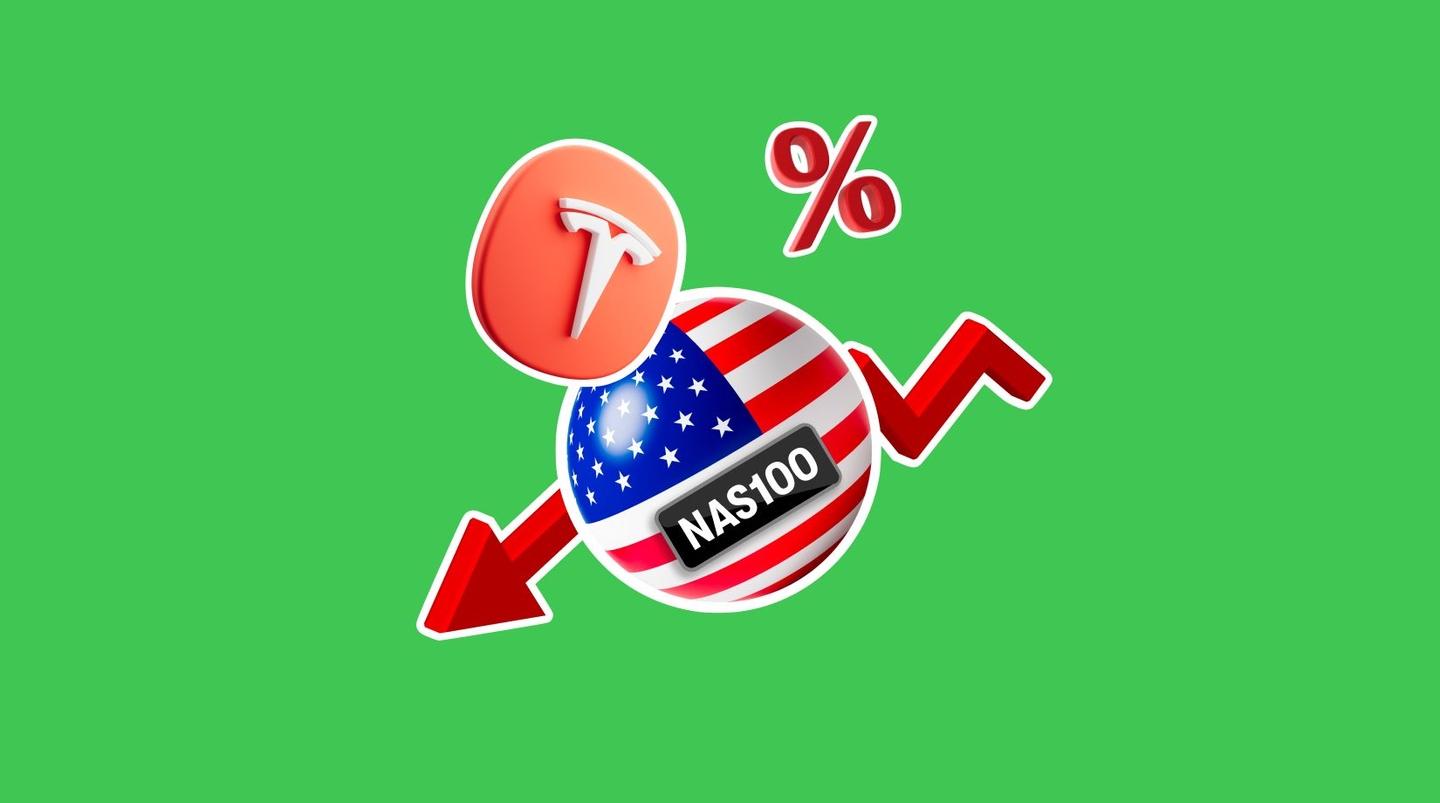The global stock market experienced impulse waves in both directions but mostly ended the day at a lower price. Analysts and economists advise buyers to struggle to maintain momentum while indices hover around significant long-term resistances and all-time highs. For example, the DAX is only 2.30% away from reaching its all-time high, and the SNP500 is trading at a price that has previously triggered strong selloffs on 4 occasions over the past 11 months.
These levels act as a significant psychological level for traders while the economic future remains uncertain. However, short to medium-term traders focus largely on the price action rather than the longer-term picture. Traders concentrating on indices will follow the most recent earning season, which we will analyze below.
Furthermore, crude oil is the instrument showing the clearest direction and momentum within the commodity market. The price of Crude Oil declined by almost 2.60% within a single day and continues to decline during this morning’s Asian session by a further 0.75%. Crude Oil came under pressure as buyers shifted their monetary policy expectations to slightly more hawkish. The instrument’s price is now at its lowest price in 20 days.

The Bank of England, the Federal Reserve, and the ECB expect to push back a potential halt in their hiking cycle. Specifically, the Bank of England is under much pressure to hike again after inflation remained in double digits. The price also came under pressure as supply chain disruptions eased and Turkey started production at a new large natural gas and oil field in the Black Sea.
GBP/USD - Central Banks Continue to Support a Further Hike
The GBP/USD increased by 0.20% during this morning’s Asian session as the European market approached. The exchange rate also continues to experience the highest volatility amongst the ‘major currency pairs” group. This morning's price movement is related to the dollar, not the Pound. The US Dollar has seen a 30-minute decline against all currencies, and the US Dollar Index declines by 0.16% but remains higher than the previous days.
The price of the Pound initially experienced high levels of volatility and a surge in buyers, are investors believed the Bank of England would be forced to raise interest rates. However, the Federal Reserve is now also expected to raise rates next month and then sit on the Federal Fund Rate until the end of the year. In an interview with Reuters, St. Louis Fed President James Bullard confirmed that monetary policy tightening could continue amid the release of recent economic data.

The Dollar is also influenced by the White House’s latest report that the US government must increase the “debt ceiling”. According to economists, the significant decline in tax revenue could hasten the default date. Falling tax revenue directly results from higher interest rates and low economic growth. Analysts advise that this limits the Fed’s hiking potential.
Nonetheless, the economy at the highest risk of experiencing a recession remains the UK. However, the Pound remains in high demand due to the monetary policy.
NASDAQ - Tesla Sends the NASDAQ on a Decline
The price of the NASDAQ is primarily influenced by the most recent earnings report from Tesla. The earning report has sparked a strong selloff, causing the stock price to decline by more than 6% outside of trading hours in addition to yesterday’s 2% decline. Overall, the stock has decreased by 8% in 24 Hours. Tesla’s Revenue was slightly lower than expected and lower than the previous quarter. Revenue was confirmed as $23.36 Billion, and the earnings per share came in as expected at $0.85.
Tesla shareholders fear that recent discounts announced by the company for certain products and indications of more cuts will hit profits and dividends. Experts have advised that Tesla seems to focus on market share rather than profits and is anticipating a drop in demand. As a result, the price declined to a 3-month low. This is a recurring picture and can also be seen in the Fed’s monthly beige book released last night. The beige book indicates “stagnation” due to less access to debt. This is what the Fed wants to see, but it should not necessarily spiral into a recession.
The price of the NASDAQ is mainly trading within an extended price range between $12,967 and $13,130. If the price breakouts of this range, traders are potentially using the breakout to indicate a stronger decline. The price this morning is declining by 0.50%. Currently, the price is experiencing more downward pressure and is trading below the 75 simple moving average and the volume-weighted average price. Traders can use the market’s debt to ensure no surge if buyers or sellers enter at the breakout levels.
Technical analysis is currently pointing towards a downward trend in the short term. The price is trading below the Ichimoku Cloud, the Bollinger Band is pointing downwards, and the Parabolic SAR is also signaling a decline. Though, traders should be cautious that the signals may change if the price increases above the $13,057 pivot point.

Summary:
- Crude Oil declined by 3.35% over the past 24 hours as buyers expect more interest rate hikes and the Fed’s beige book signals economic stagnation.
- Tesla’s earning report has sparked a selloff, causing the price to decline by more than 6% outside trading hours. Tesla shareholders fear that recent discounts announced by the company for certain products and indications of more cuts will hit profits and dividends.
- Tesla’s board confirmed the company might again cut prices. Stocks come under pressure from earnings reports and the Fed’s latest beige book, signaling a weaker economic outlook.
- The NASDAQ’s price declined by 0.50% this morning, and traders are monitoring if the asset can form a bearish crossover.


